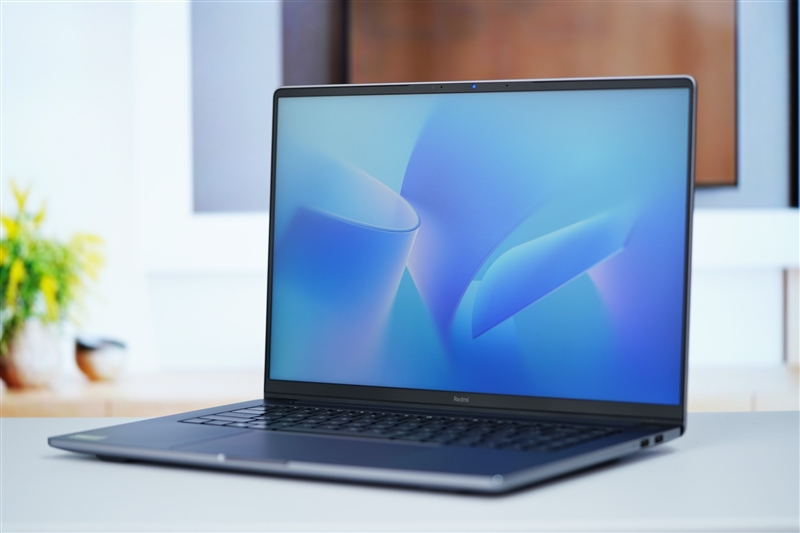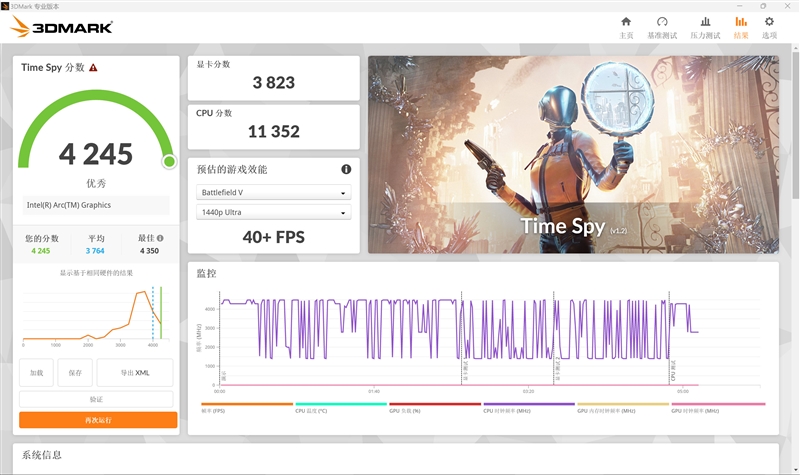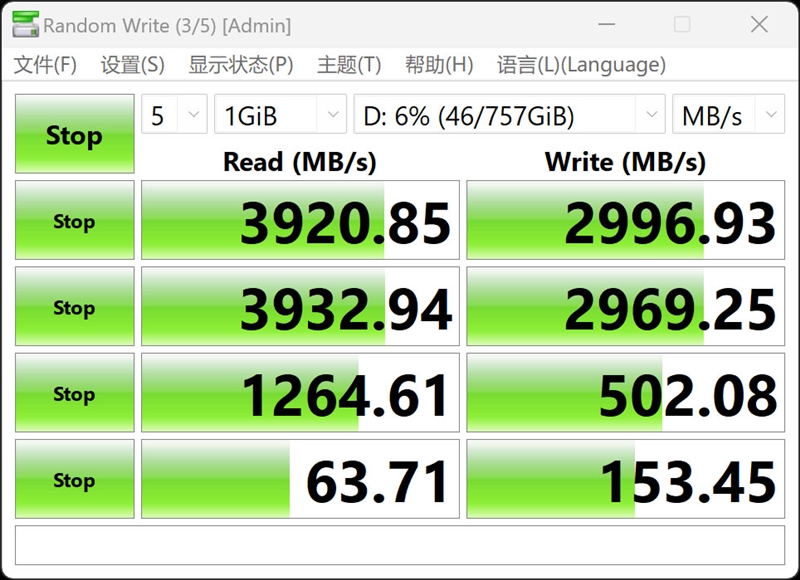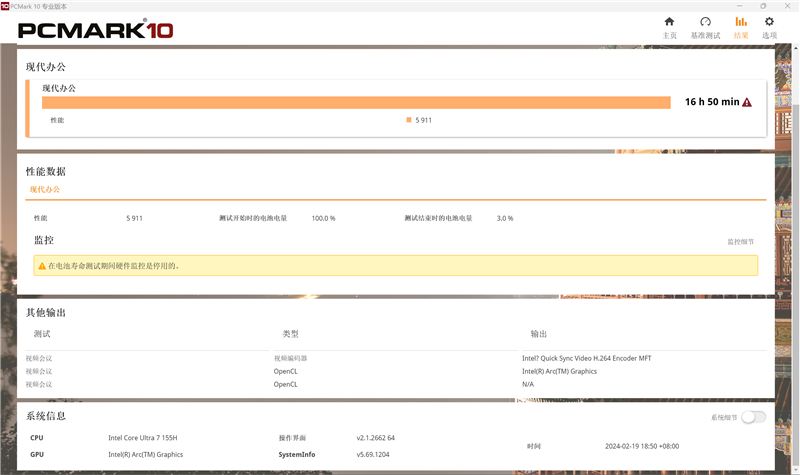In Xiaomi’s product line, Redmi emphasizes cost-effectiveness, while Xiaomi focuses on high-end products. This holds true for both mobile phones and notebooks. Now, let’s delve into the notebook category and highlight the RedmiBook Pro 16. As the flagship model in this lineup, the RedmiBook Pro 16 boasts commendable pricing and craftsmanship. However, it’s worth noting that the last update occurred in 2022. Good products are never too late, and with the arrival of spring in 2024, this top-of-the-line product is finally getting an update. Introducing the RedmiBook Pro 16 2024 – a notable milestone as the first in the Redmi Book series equipped with the Intel Core Ultra processor.
Let’s explore the actual performance of the RedmiBook Pro 16 2024 and discover the surprises it brings.
Firstly, it’s the Intel Core Ultra processor, introduces a new architecture and marked as the most significant generation change in Intel processors. This processor features a hybrid architecture design with performance cores, energy efficiency cores, and an added ultra-low power consumption energy efficiency core for a more advanced heterogeneous design.
The Core Ultra 7 155H processor consists of 6 performance cores at 4.8GHz, 8 energy efficiency cores at 3.8GHz, and 2 ultra-low power cores at 2.5GHz – totaling 16 cores and 22 threads. The most noticeable improvement is its flexible power consumption control. The basic power consumption of 65W, already more potent than previous generations, is further unlocked by Redmi to 70W, potentially delivering enhanced performance.
However, higher power consumption may impact battery life. To address this, Intel separated media, graphics, and display modules on the Meteor Lake architecture, adding ultra-low power consumption energy efficiency cores for power-saving needs.
Moving on to the GPU, the Core Ultra processor incorporates the Xe LPG architecture, similar to the Xe HPG of the Arc independent graphics card, providing a substantial improvement in graphics performance.
The Core Ultra 7 155H processor integrates 8 Xe cores, 1024 FP32 units, and 8 light tracing units, running at a frequency of up to 2.25GHz. It supports DX12 Ultimate, XeSS, Deep Link, and other technologies, potentially surpassing the Radeon 780M.
Additionally, the Core Ultra processor includes an independent NPU engine, enhancing the AI performance of the processor for a broader range of usage scenarios. Moving to the display, the Redmi Book Pro 16 2024 features a 16-inch 165Hz ultra-high refresh rate 3K screen, considered one of the best IPS screens at its price point.
Specifications include a resolution of 3072×1920, a refresh rate of 165Hz, 100% DCI-P3 color gamut, 1500:1 contrast ratio, Dolby Vision, and HDR 400. The screen’s brightness reaches 500nit, exceptional for laptops where 250nit~350nit is more common.
Thanks to the Meteor Lake architecture, the Redmi Book Pro 16 2024 accommodates a 99Whr large-capacity battery, promising good battery life with the Core Ultra 7 155H processor. With these advancements, the Redmi Book Pro 16 2024 stands out as a promising contender. Next, we’ll explore its multifaceted performance.
Design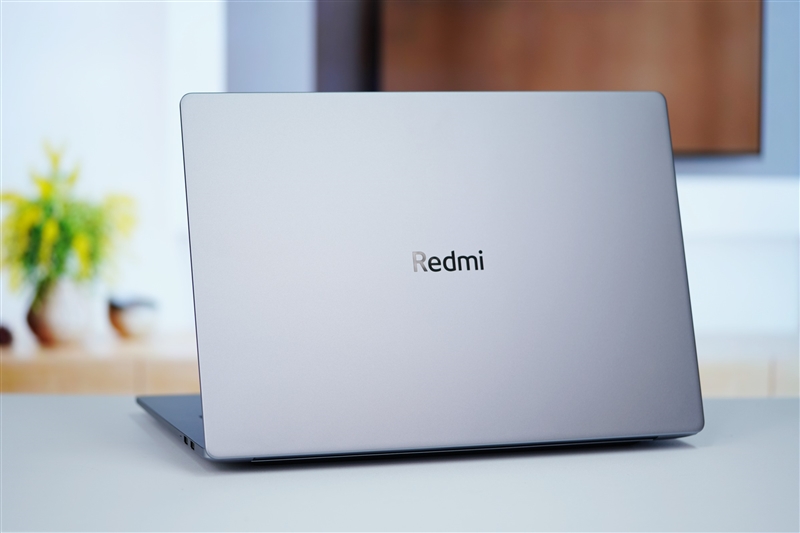
RedmiBook Pro 16 2024 maintains a familiar appearance, featuring a straightforward silver metal panel adorned with the central Redmi Logo on side A. Crafted from all-metal material through CNC-integrated carving technology, the ACD surface stands out.
It now embraces a robust CNC diamond rotating shaft, and the edges are intentionally rounded for a more comfortable grip. Redmi Book Pro 16 2024 boasts a thickness of 15.9mm and a weight of approximately 1.88kg.
Display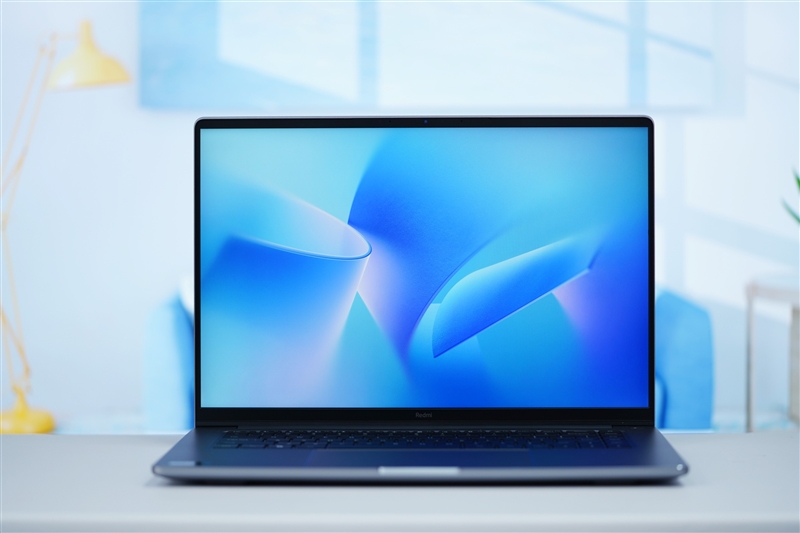
Moving on to the 16-inch IPS screen, it embraces third-class narrow bezels, achieving a 91.88% screen-to-body ratio. With a resolution of 3072×1920, a 165Hz high refresh rate, and 500nit brightness, it impresses with remarkable specifications. Additionally, it supports a 100% DCI-P3 color gamut, a 1500:1 contrast ratio, Dolby Vision, and HDR 400.
Moreover, the screen facilitates a 180-degree opening and closing angle, enhancing convenience during meetings and work sessions. A 1080P ultra-high-definition camera complements a 4-microphone array that records the user’s voiceprint. Through deep neural network analysis, it identifies the user’s voice, suppresses surrounding noise, and enhances the video conferencing experience.
On side C, the touchpad reaches a record size for the Redmi Book series at 150×95mm, providing a smooth user experience. Notably, the touchpad features built-in NFC, enabling seamless connection with ThePaper OS phone with just one touch.
Furthermore, the touchpad offers quick mode-switching capabilities through Fn+K, toggling between quiet mode, balanced mode, and extreme speed mode. In the upper right corner, the power supply integrates a fingerprint recognition solution, streamlining boot and login operations with a single press.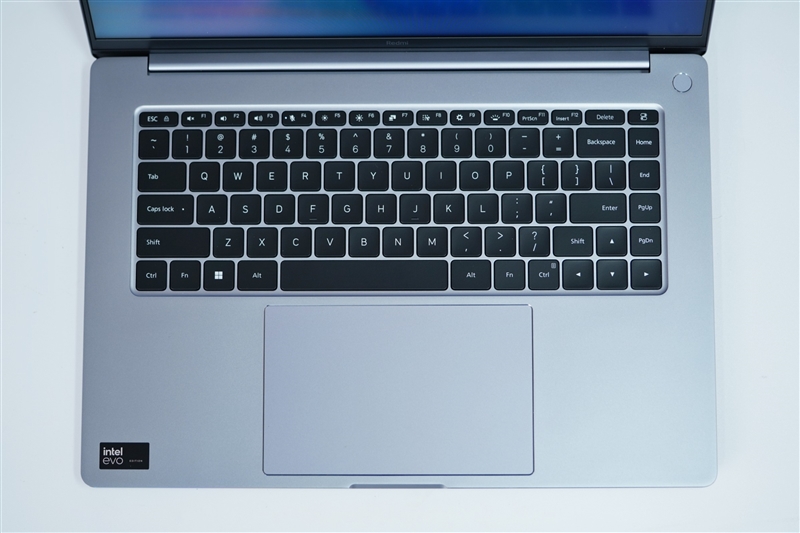
Replacing the original Xiao Ai voice button, the Xiaomi Computer Manager button, located in the same corner, enables rapid functions such as performance mode switching and scheduling, customizable to the user’s preferences. A list of ports includes full-featured USB-C, Thunderbolt 4, HDMI 2.1 TMDS, and a 3.5mm audio interface.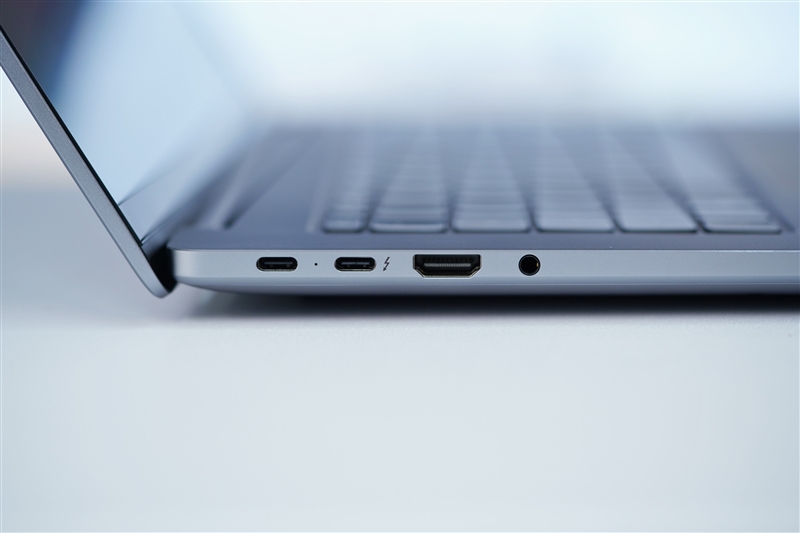
On the right side, two USB-A 3.2 Gen1 ports enhance connectivity options. Moving to side D, a row of large-area heat dissipation grilles catches the eye. The package includes a 140W gallium nitride charger and dual USB-C cables. Redmi Book Pro 16 2024 implements a dual fan and three-heat pipe cooling solution, reaching fan speeds of up to 6400 RPM.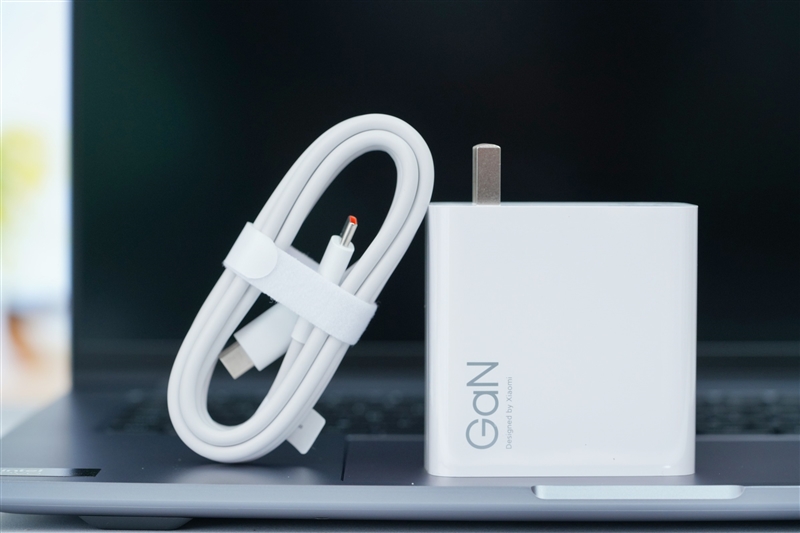
Equipped with dual 12V high-speed fans, an 8mm+6mm+6mm heat pipe covers the main core components, swiftly dissipating heat from the fuselage. This ensures stable performance output and allows the computer’s performance release to reach astonishing levels, up to 70W. On the far right side, a pre-installed 1TB M.2 2230 SSD, model Yangtze Storage PC300, features a heat dissipation armor. Notably, scalability is considered, with a PCIe 4.0 speed M.2 2242 slot reserved to the left of the right fan. The lower half houses a substantial 99Whr lithium-ion battery.
Performance Test
In this RedmiBook Pro 16 performance test, we activated the “violent mode” in Xiaomi Computer Manager to assess its release level.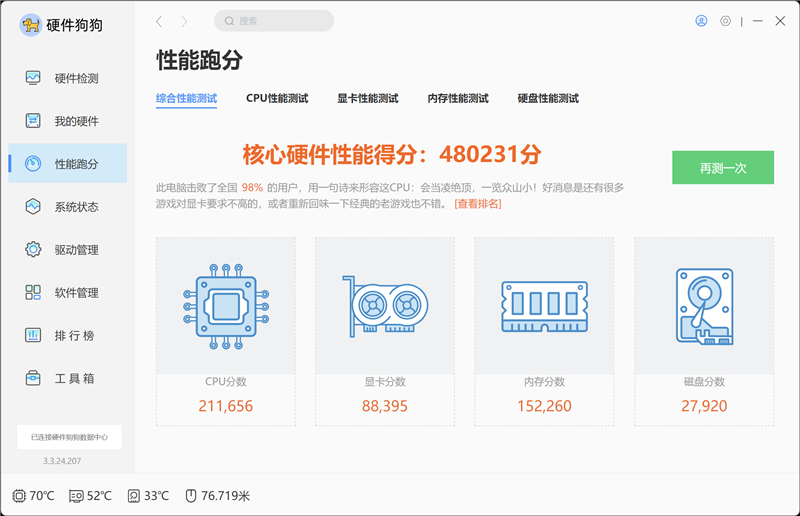
A tool by Driver Home, tailored for mainstream PC players. It utilizes fast technology algorithms and authoritative test modules like 3DMark to comprehensively evaluate the PC’s configuration. The Redmi Book Pro 16 2024 scored 480,231 points, surpassing 98% of notebook users, highlighting its powerful CPU in the gaming notebook.
Specifically, the Core Ultra 7 155H exhibited a score breakdown: 211,656 for the core, 88,395 for memory, and 27,920 for the hard disk. Notably, this gaming notebook’s CPU and memory enhancements have elevated the performance of thin and light notebooks beyond the 20~30W range.
Comparing it to earlier models, the CPU performance is on par with the 13th generation 60W H-series standard processor, and the doubled memory contributes to the overall outstanding performance.
Moving on to the CPU-Z test, the Core Ultra 7 155H achieved a single-thread score of 743.5 and a multi-thread score of 8615.1.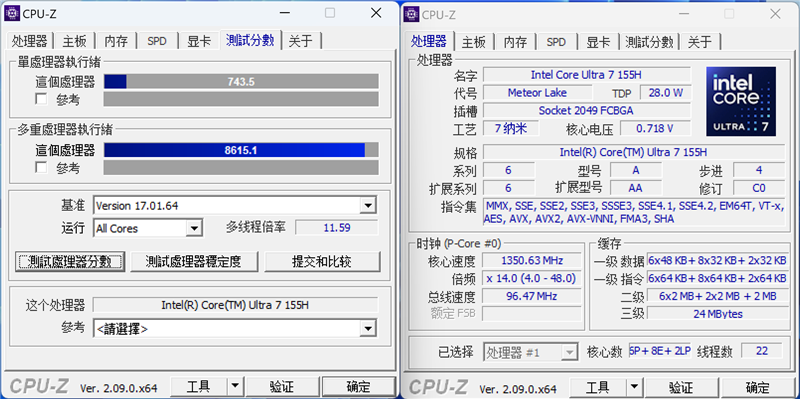
- In the CINEBENCH R15 test, the Core Ultra 7 155H scored 261 for single-thread and 2903 for multi-thread.
- CINEBENCH R20 revealed a single-thread score of 683 and a multi-thread score of 7183.
- In the CINEBENCH R23 test, the single-thread score was 1784, and the multi-thread score was 18,521.
- The single-threaded score was 105, and the multi-threaded score was 995.
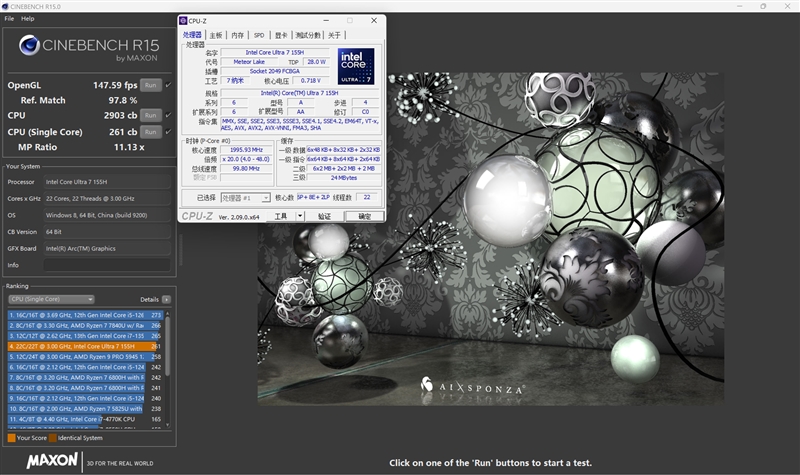
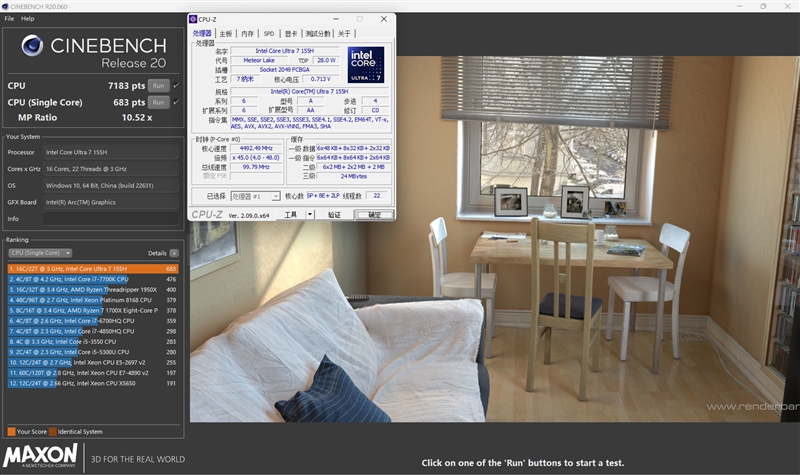
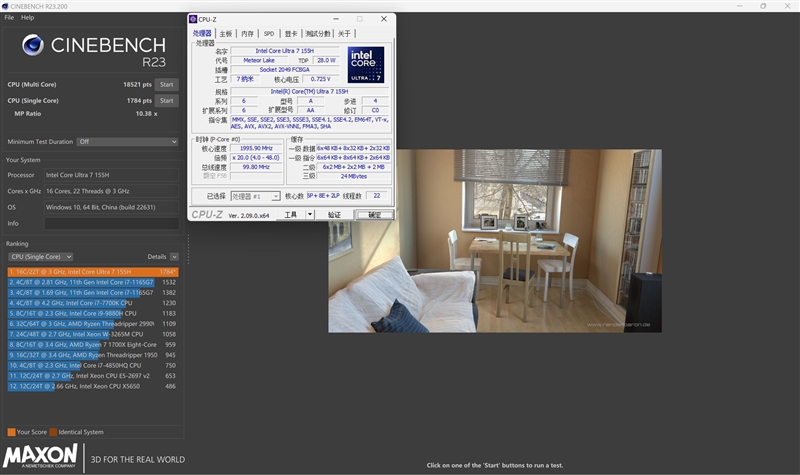
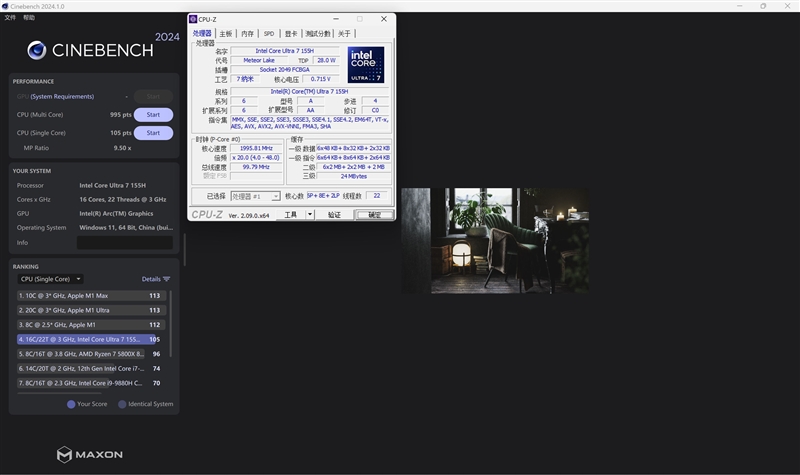
- The single-threaded score was 105, and the multi-threaded score was 995.
Switching to Chess, supporting a maximum of 16 threads, the Core Ultra 7 155H displayed a relative performance multiple of 67.79, achieving 32,537 thousand steps per second.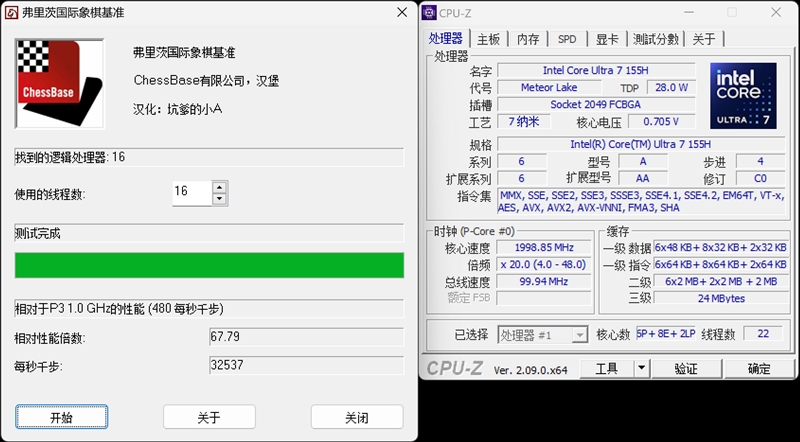
Comparatively, the Core Ultra 7 155H’s test results are surprising. With a mere 70W power consumption, it outperforms the 80W Ryzen 9 6900HS, leading by 12.1% and 31.8% in single-core and multi-core.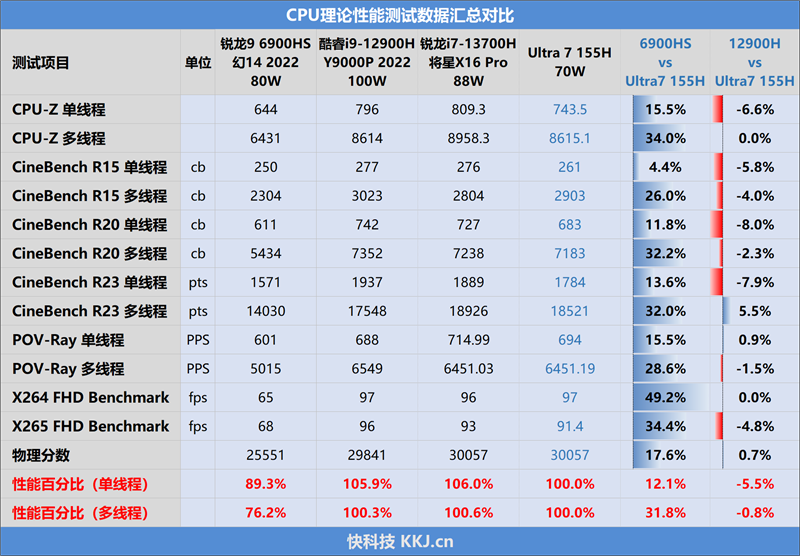
Even against Intel’s H series standard pressure, the Core Ultra 7 155H exhibits superior energy efficiency, matching the multi-core performance of the Core i9-12900H/i7-13700H, with only a 6% difference in single-core performance.
Graphics Performance Test
Let’s delve into the graphics performance of our Arc core. Starting with the theoretical test, in 3DMark’s Time Spy project, boasting DX12+2K resolution rendering, the Arc core secured a total score of 4245. Notably, the Arc core graphics score stood at an impressive 3823.
Thanks to the high-frequency LPDDR5X-7467 memory, the Arc core display flexes its muscles, delivering potent performance.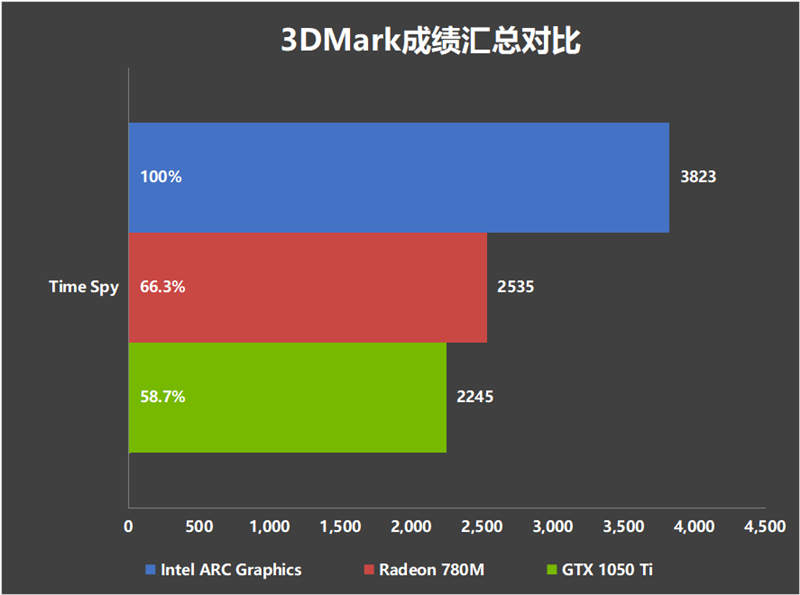
Now, comparing figures, the Arc core display outshines the Radeon 780M and GTX 1050 Ti by 50.8% and 70.3%, respectively.
Game Test
-
Final Fantasy 15
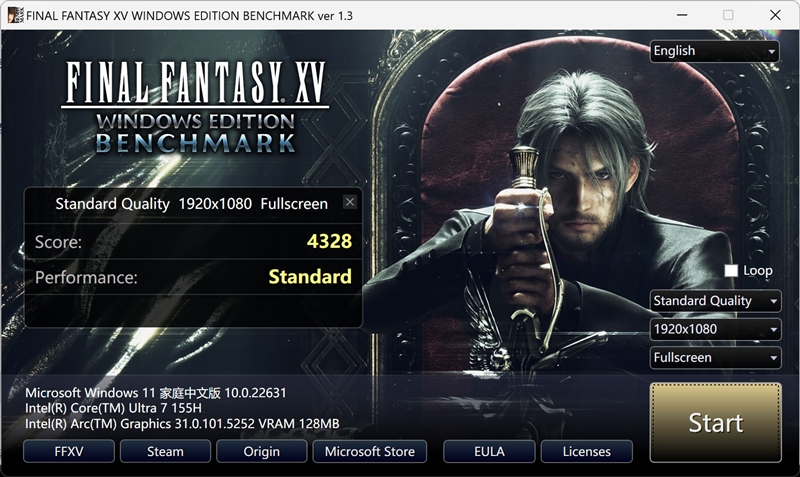
In the Final Fantasy 15 Benchmark, our final score soared to 4328. This showcases a performance that doubles the graphics capabilities of the 45W Core i5-13500H processor.
-
World of Tanks

Under the demanding image quality of “World of Tanks,” our score hits 12105, translating into an impressive frame rate of approximately 73 FPS. Switching to medium quality, the score reaches 28403, resulting in a frame rate of around 171 FPS. Remarkably, this performance is twice that of the Core i5-13500H.
-
Far Cry 6
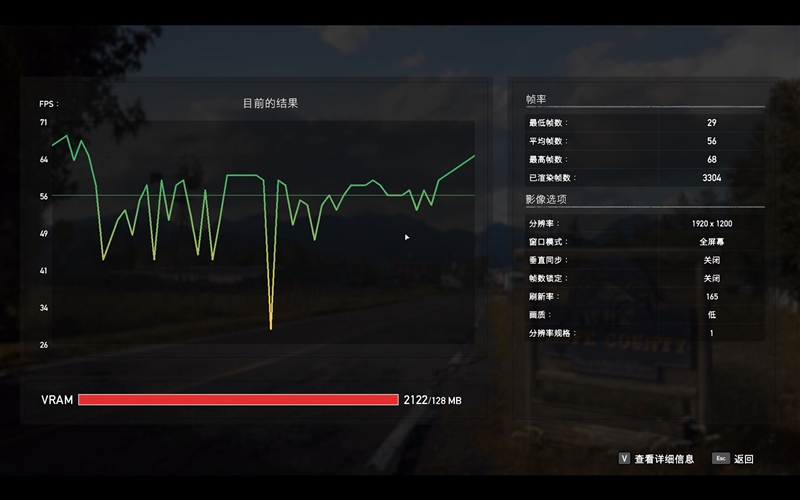
Exploring “Far Cry 6” at 1080P low quality, we observed an average frame rate of 56 FPS.
-
Shadow of the Tomb Raider
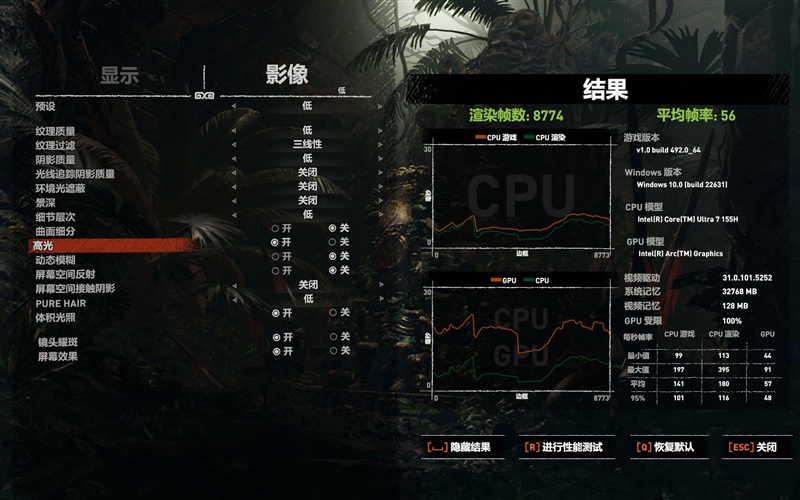
Similarly, in the 1080P low-quality setting of “Shadow of the Tomb Raider,” we recorded an average frame rate of 56 FPS.
Analyzing these real-game scenarios, it’s evident that some 3A game masterpieces run seamlessly, achieving frame rates close to 60 FPS even at low image quality.
AI Test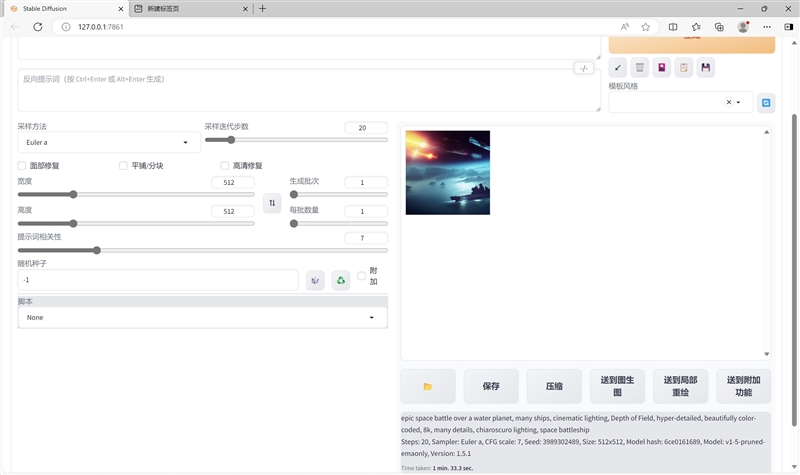
Stable Diffusion, an image-based AI model, was tested. This AI mapping tool allows users to input a sentence or specific keywords to create a desired image. Intel supports Stable Diffusion through the OpenVINO solution, usable with CPU or core display for “alchemy.”
When testing with the keyword “Space War,” Euler an as the sampling method, a resolution of 512×512, and 20 iteration steps, the Redmi Book Pro 16 2024 notebook review revealed a 70W all-round release that refreshed the upper limit of thin and light notebooks.
In default mode, OpenVINO is off, but with NPU support, the generation speed is rapid, producing an image in 93 seconds. However, with OpenVINO on and GPU as the rendering device, efficiency improves further, achieving 1.93it/s. Image generation takes only 35 seconds, 1.66 times faster than the default.
Moving on to the large language model, Intel developed the BigDL-LLM library for local execution. This library is optimized and compatible with various large language models, enabling it to run on notebooks with Intel Core processors or higher and 16GB of memory, supporting models with up to 16 billion parameters.
The AI application utilized in the RedmiBook Pro 16 2024 notebook review is the “Intel Large Language Model” Demo. The task involved generating a five-day travel itinerary in Yunnan.
Throughout this process, the NPU exhibited an average generation rate of 58.69 ms/token, showcasing remarkable speed. This large model application, operating offline and generating results locally, proves to be powerful in terms of performance, even without internet connectivity.
Screen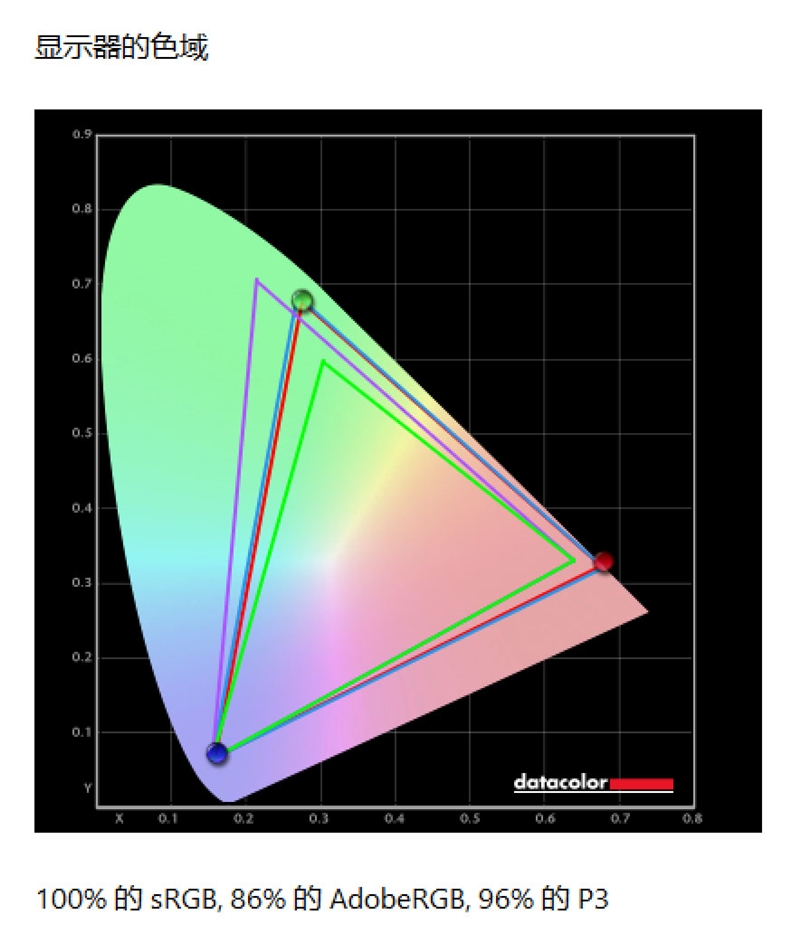
In terms of color gamut, the color gamut of RedmiBook Pro 16 2024 covers 100% sRGB, 86% Adobe RGB, and 96% DCI P3, which is an excellent result on an IPS screen.
In SDR mode, the measured maximum brightness of this screen can reach 460 nits, and the maximum contrast ratio is 1360:1.
In terms of color accuracy, the maximum measured Delta-E value is 2.68, the minimum value is 0.14, and the average value is 0.7, which is comparable to professional monitors.
Memory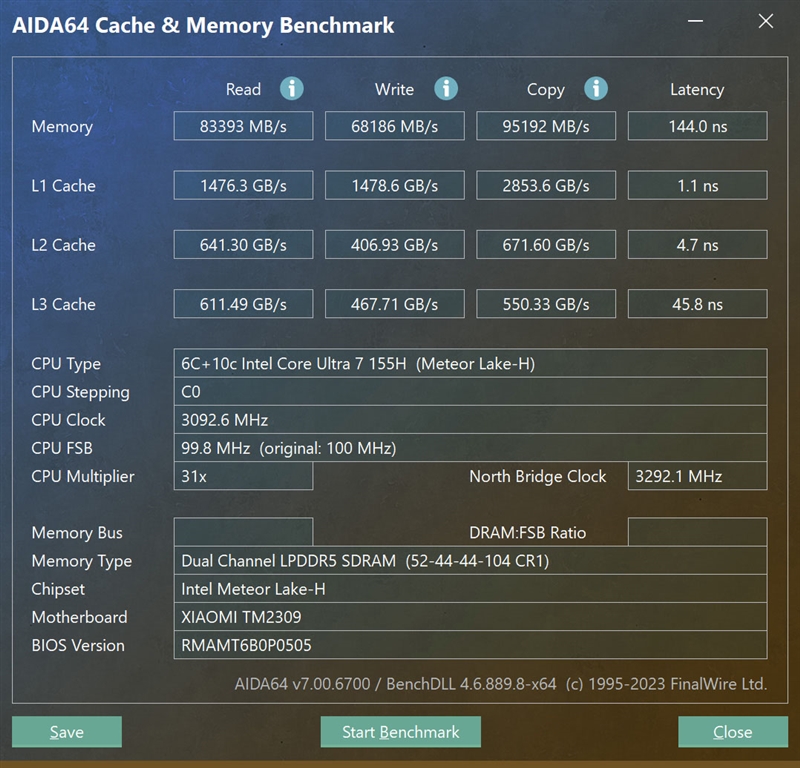
Redmi Book Pro 16 2024 has built-in dual-channel 32GB LPDDR5X-7467 with timings of 40-39-39-77.
PS: Due to compatibility issues, the software cannot correctly identify the frequency and channel number.
Memory testing was performed on AIDA64. The read, write, and copy bandwidths were 83393MB/s, 68186MB/s, and 95192MB/s respectively, and the latency was 144ns.
Harddisk
RedmiBook Pro 16 2024 is equipped with a 1TB PCIe 4.0 NVMe SSD. In the CrystalDiskMark test, it can achieve a sequential reading speed of 3.9GB/s and a writing speed of 3GB/s. It can also achieve a 4K random speed of 64MB/s. Read and write speeds of 153MB/s.
Battery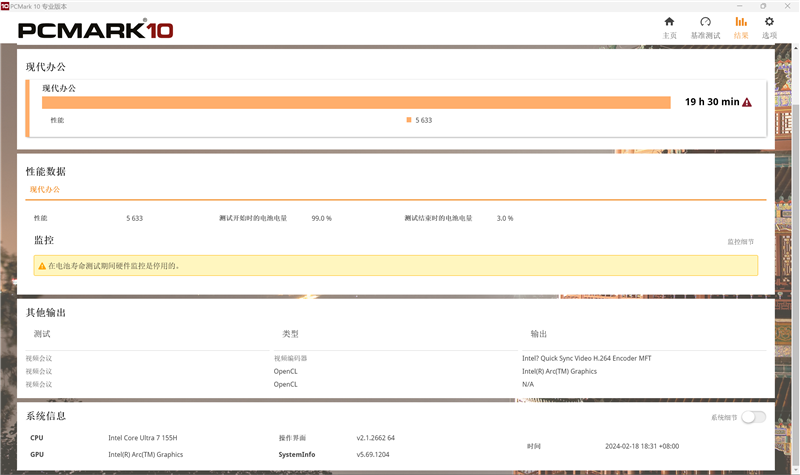
When the oven is initiated by Core Ultra 7 155H, it consumes 110W of PL2 power, causing a significant temperature rise, peaking at 107°C. During this phase, Core Ultra 7 155H’s P-Core hits a maximum frequency of 4.6GHz, E-Core reaches 3.8GHz, and LP E-Core operates at 2.5GHz. After a 10-minute bake, power consumption stabilizes at 70W and the temperature hovers around 97°C.
At this juncture, Core Ultra 7 155H’s P-Core attains a maximum frequency of 4GHz, E-Core hits 2.8GHz, and LP E-Core operates at 2.1GHz. Transitioning to the Redmi Book Pro 16 2024, equipped with a 99Whr lithium-ion battery, we conducted a battery life test using PCMark 10’s modern office test.
In the test, we switched the power mode to “Best Energy Efficiency” and set Xiaomi Computer Manager to “Quiet Mode” with a 50% brightness level. With the addition of two LP E-Cores in the Meteor Lake architecture, power consumption can be kept exceptionally low when no program is active.
Ultimately, the RedmiBook Pro 16 2024 achieved an impressive 19.5-hour score in the PCMark 10 modern office endurance test, easily doubling the endurance score of similar thin and light notebooks.
In a subsequent battery life assessment, we adjusted the power mode to “Balanced,” set Xiaomi Computer Butler to “Balanced Mode,” and maintained a 50% brightness level.
The result was a remarkable battery life of nearly 17 hours, showcasing excellent performance. Despite being supported by a substantial 99Whr battery, the advantages facilitated by the Meteor Lake architecture should not be underestimated.
Verdict
The Meteor Lake architecture’s Core Ultra 7 processor now contends not with the traditional U low-voltage and low-power series, but with the H standard voltage high-performance series.
The 12th/13th generation Core i7 H series in gaming notebooks, Core Ultra 7 achieves lower power consumption while remaining competitive in multi-core performance.
However, being the first generation Core Ultra, it lags by 5~6% in single-core performance. Improvement is possible, but in terms of energy efficiency, it already demonstrates robust performance.
Moreover, the GPU upgrade marks a significant leap. If AMD Radeon 780M’s performance is likened to independent graphics, Arc core graphics truly replace entry-level independent graphics, eliminating the graphics performance bottleneck for Intel mobile processors. In essence, graphics performance is no longer a limitation for Intel mobile processors.
AI
Beyond noticeable performance gains, the NPU engine embedded in the Core Ultra processor elevates the AI capabilities of the mobile processor.
On the Redmi Book Pro 16 thin and light notebook, using Stable Diffusion for “alchemy” is seamless. Paired with Intel OpenVINO, generating a picture takes only 35 seconds, and running large model data is a breeze.
Core Ultra processors fully realize faster and more expansive AI performance.
Starting from this generation, the often-discussed AI PC is exemplified in the Redmi Book Pro 16 with Core Ultra 7.
Battery life:
In our previous tests, Intel thin and light notebooks maxed out at 14 hours of battery life, compromising performance.
Core Ultra introduces two ultra-low power cores (LP E-Core) to the original hybrid architecture (P-Core + E-Core), extending battery life.
The concept is straightforward: during low-load periods like video watching or standby, ultra-low power consumption ensures system operation, achieving longer battery life for thin and light notebooks.
The RedmiBook Pro 16, equipped with Core Ultra 7 155H and a 99Whr battery, impressively clocks in at 19.5 hours.
Compared to past generations, this result is striking, offering both robust performance and enduring battery life without the need for compromise.
Screen:
As the device’s output soul, the screen dictates our usage scenarios. Regarding color accuracy, the Redmi Book Pro 16 boasts 100% sRGB, 86% Adobe RGB, and 96% DCI P3 coverage, with an average Delta-E of 0.7, ensuring excellent quality.
With Core Ultra 7 155H enhancements in processor, graphics, AI, and battery life, the Redmi Book Pro 16 easily fulfills productivity, professional design, and other needs.
In conclusion, positioned as a thin and light book, the Redmi Book Pro 16, powered by Core Ultra 7, pleasantly surprises the user experience department.
Augmented by Xiaomi Pampers’ cross-device collaboration features like Xiaomi mutual transmission and cross-device clipboard, it breaks down barriers between devices, enhancing productivity.
For those seeking a thin and light book that seamlessly blends performance, battery life, and productivity, the Redmi Book Pro 16 with Core Ultra 7 is a compelling choice.
Read Also: Xiaomi RedmiBook Pro 16 2024 released: 99Wh battery ceiling from 5999 yuan, $844










